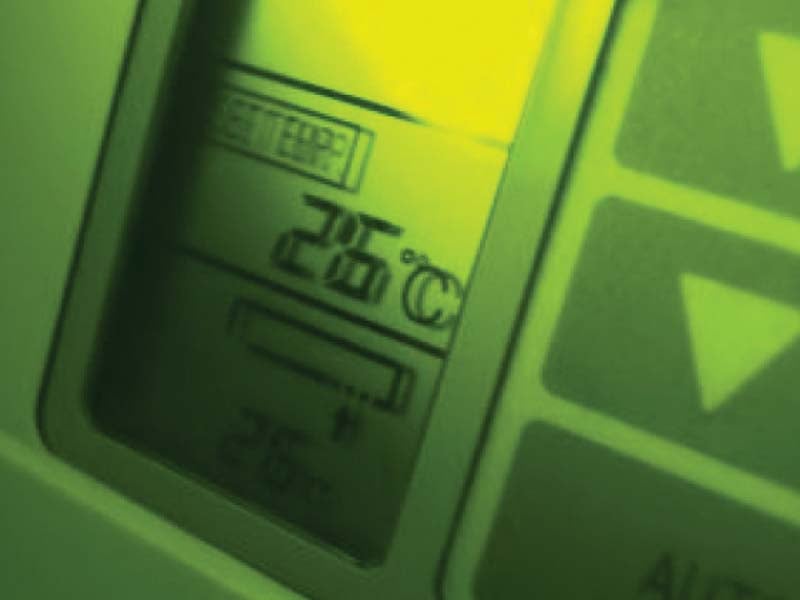
Pak Elektron Limited (PEL), the popular brand behind home appliances, has been around since the 1950s.
Acquired by a branch of the Saigol family in 1978, the company has since then partnered with engineering giants like Carrier, expanded into making capital goods including power transformers, grid stations and even ventured into the large-scale contracting business
From an investor’s perspective, however, the company started losing its charm sometime around the mid-2000s; its share price spiralled down, along with net profit. However, all that was till last year.
In 2014, the company posted a net profit of Rs2.24 billion, more than the combined profits of the previous seven years - and that does not include the loss of Rs1 billion incurred in 2011.
In the first half (January-June) of 2015, PEL had already booked a profit of Rs2.13 billion, with the target of taking it to Rs4 billion by year-end.
What’s driving the growth?
Some luck and years of perseverance, said its chief financial officer (CFO) Syed Manzar Hassan.
“If you look at our profits, they have gone up at a time when oil prices came down. Consequently, price of other commodities like plastic and metals have been affected the world over,” he told The Express Tribune.
“Cut in interest rate with improvement in Pakistan’s economic outlook also helped clamp down financial charges, “he said. “Rupee remained relatively stable, which also worked in our favour.”
But behind these external factors that have improved the gross margins lies another story.
Its revenue is almost equally divided between its two business divisions - power and appliances.
The power division relies on manufacturing and distributing transformers, switch gears, energy meters and EPC service. It has won orders to build grid stations for state-run power distribution companies and has laid electricity infrastructure for DHA.
The company is hoping for more contracts as the government pushes to revamp power infrastructure and new housing colonies crop up.
In its appliances business, PEL derives 92% of its revenue from the sale of refrigerators. “And 60% of these are sold in rural areas. As a matter of fact, the 60-40 ratio between rural and urban has been there for a few years,” said Hassan.
Post 2003, the global increase in prices of commodities, including that of cotton, wheat, rice and sugarcane, has raised disposable incomes in villages across Pakistan, he said
“Fridge has become kind of a necessity even with all the electricity shortages. People need to store food and they need a glass of cold water.”
The recent economic slowdown in China and the developed economies of the west that have brought down commodity prices did not bother Hassan much.
“Yield of many crops has gradually improved,” he said. “Cultivated land is also increasing. Pakistan also has a fifth province of Afghanistan to feed, so I am not worried about the slowdown.”
Unlike other appliances, refrigerators are also protected from import competition. “It doesn’t make sense importing refrigerators, which are vacuum from the inside. It would be like importing a lot of air,” added Hassan.
There was a time when PEL was the leading maker of window air conditioners with a 50% market share. But with the advent of spilt ACs, it lost the market almost completely by 2012.
While the company made a comeback with its own split ACs in 2014, the product has not yet become its main focus. After 9,000 units last year, it has managed to sell 20,000 this year so far.
“Margins on other products are higher. We have a four-month window during the summer season to sell the stock otherwise, you are stuck with it for rest of the year.”
But PEL intends to shift its focus over the next two years.
“We will be moving aggressively on deep freezers, microwave ovens and split ACs. That is where we see a growth of 30% to 40%. Growth in refrigerator market will remain around 10 to 15%.”
Capitalising on the good times, PEL has also raised Rs3.8 billion in equity in the last two years that has helped it reschedule its debt and raise enough cash to meet future working capital requirements.
Published in The Express Tribune, September 5th, 2015.
Like Business on Facebook, follow @TribuneBiz on Twitter to stay informed and join in the conversation.


































1713853507-0/MalalaHilary-(2)1713853507-0-270x192.webp)








COMMENTS (1)
Comments are moderated and generally will be posted if they are on-topic and not abusive.
For more information, please see our Comments FAQ